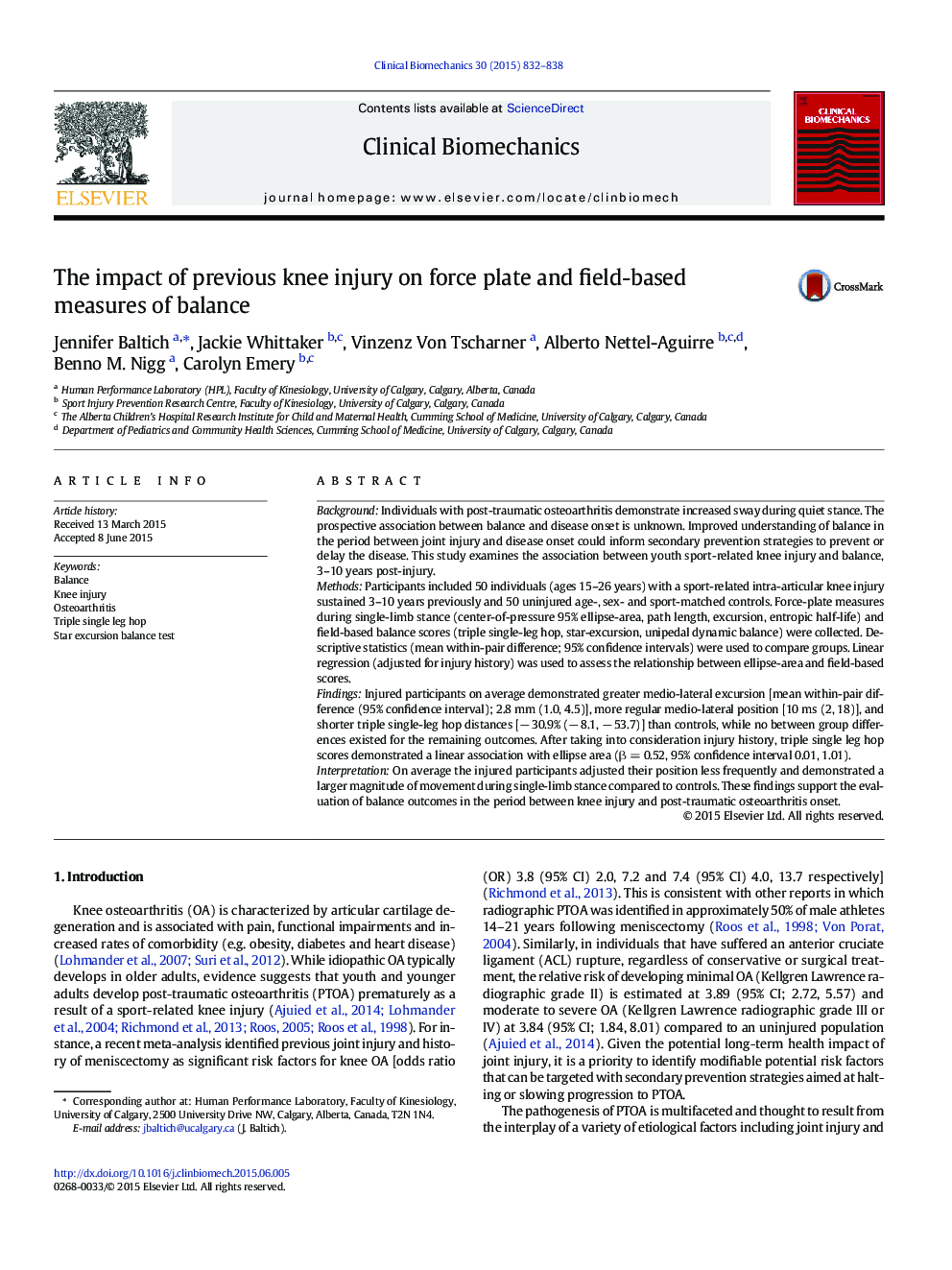| کد مقاله | کد نشریه | سال انتشار | مقاله انگلیسی | نسخه تمام متن |
|---|---|---|---|---|
| 6204691 | 1264910 | 2015 | 7 صفحه PDF | دانلود رایگان |
- Previously injured participants moved more and made less postural corrections.
- Previously injured participants had greater center of pressure excursion.
- Previously injured participants had more regular center of pressure movement.
- Previously injured participants had shorter triple single leg hop distances.
- Triple single leg hop had a linear association with center of pressure ellipse.
BackgroundIndividuals with post-traumatic osteoarthritis demonstrate increased sway during quiet stance. The prospective association between balance and disease onset is unknown. Improved understanding of balance in the period between joint injury and disease onset could inform secondary prevention strategies to prevent or delay the disease. This study examines the association between youth sport-related knee injury and balance, 3-10 years post-injury.MethodsParticipants included 50 individuals (ages 15-26 years) with a sport-related intra-articular knee injury sustained 3-10 years previously and 50 uninjured age-, sex- and sport-matched controls. Force-plate measures during single-limb stance (center-of-pressure 95% ellipse-area, path length, excursion, entropic half-life) and field-based balance scores (triple single-leg hop, star-excursion, unipedal dynamic balance) were collected. Descriptive statistics (mean within-pair difference; 95% confidence intervals) were used to compare groups. Linear regression (adjusted for injury history) was used to assess the relationship between ellipse-area and field-based scores.FindingsInjured participants on average demonstrated greater medio-lateral excursion [mean within-pair difference (95% confidence interval); 2.8 mm (1.0, 4.5)], more regular medio-lateral position [10 ms (2, 18)], and shorter triple single-leg hop distances [â 30.9% (â 8.1, â 53.7)] than controls, while no between group differences existed for the remaining outcomes. After taking into consideration injury history, triple single leg hop scores demonstrated a linear association with ellipse area (β = 0.52, 95% confidence interval 0.01, 1.01).InterpretationOn average the injured participants adjusted their position less frequently and demonstrated a larger magnitude of movement during single-limb stance compared to controls. These findings support the evaluation of balance outcomes in the period between knee injury and post-traumatic osteoarthritis onset.
Journal: Clinical Biomechanics - Volume 30, Issue 8, October 2015, Pages 832-838
